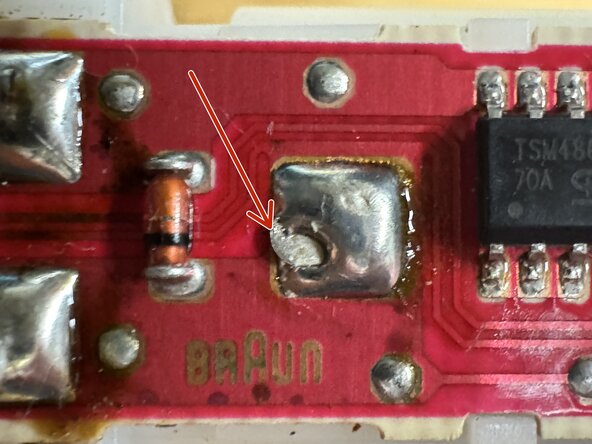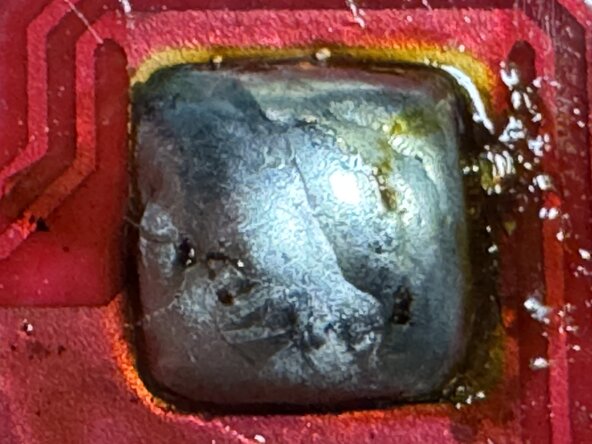crwdns2935425:02crwdne2935425:0






-
Inspect four pads with green circles (Picture #1), they should be fully covered in solder.
-
Picture #2 shows the center pad missing some solder and not making a good connection.
-
Picture #3 shows repaired solder pad. Test toothbrush battery and motor operation without toothbrush head. If toothbrush is now working, there may be no need to replace the battery - if battery is providing between 1.2 and 1.5 volts and motor is actuated by button presses, stop here and reassemble the toothbrush.
-
If battery voltage is less than 1.2 volts, consider testing motor operation and button presses with two tests; using a AA battery and a pair of wire leads touch one end of leads to battery ends and the other wire ends to: A) left board pads (to test motor leads) and then B) to right board pads (to test battery leads, center pin is positive).
-
If motor doesn't start after Step 2 troubleshooting, continue to Step 3.
crwdns2944171:0crwdnd2944171:0crwdnd2944171:0crwdnd2944171:0crwdne2944171:0